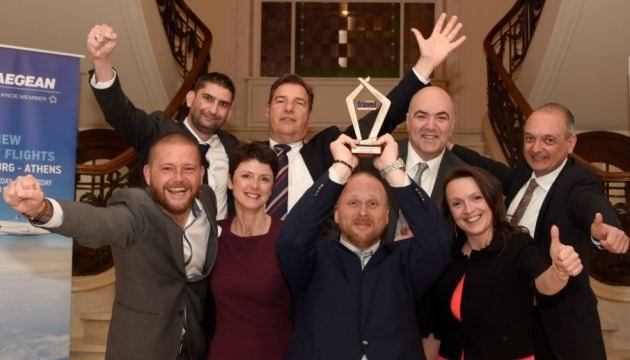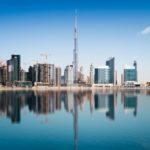Mumbai’s vibrant colors and spectacular sights will energize and enthrall visitors. Formerly known as Bombay (locals tend to stick with the original name), it’s the largest city in India—over 18 million people call it home. Endless traffic and unpleasant smells aside, this sprawling seaside metropolis offers diverse cuisine, great nightlife, grand colonial-era architecture and treasured green spaces.
Mumbai is the epicenter of India on many levels—fashion, entertainment and commerce, to name a few. The headquarters of the country’s most important financial institutions are here, including the Bombay Stock Exchange and the Reserve Bank of India. The economy is diversified; important industries include manufacturing, petrochemicals, electronics and food processing.
Getting to and from the airport
Chhatrapati Shivaji International Airport is about 23 miles north of Mumbai’s city center. The most practical way to get into the city center is by taxi. Two types of taxis operate from the airport: pre-paid and metered. You can buy a ticket from the pre-paid taxi booth outside the customs hall. There are set fares for every neighborhood. This option lets you know what you’ll pay before you enter the taxi. The journey to the city center can take anywhere from 45 minutes to two hours depending on traffic.
If you’re feeling adventurous, you can also take a Mumbai Suburban Railway Network train into town. There’s no train station within the airport itself, so you’ll have to take a bus or rickshaw to Andheri Station. Depending on your destination, take the Churchgate or CST Line. A single fare is 8 Indian rupees (US$0.12 using the exchange rate US$1 = 67 Rs), and the trip will take about 45 minutes. Be warned, the trains can be frightfully crowded.
Getting around Mumbai
The best option for getting around the city is to hire a local car and driver service for the duration of your visit. It’s relatively inexpensive in terms of the U.S. dollar or euro, and it will save you the hassle of navigating chaotic streets. But Mumbai does have an efficient public transit system if you choose to take on the crowds. If you’re traveling within Mumbai, second-class train tickets will cost 10 Rs (US$0.15) or less. First-class tickets can be up to 10 times more expensive, but the cars are less crowded and offer riders a cushioned seat. Taxis are also an option. Before you get in, check that the driver has an electronic meter. It’s helpful if you have a GPS app on your phone, as most drivers do not and may not know your destination.
Where to stay
If you’re looking for luxury and upscale hotel options, try the Sofitel Mumbai BKC (C57 Block G, Bandra Kurla Complex, Mumbai 400051; Ph: 91-22-61175000), The Taj Mahal Tower Mumbai (Apollo Bunder, Mumbai 400001; Ph: 91-22-66653366), Courtyard Mumbai Airport (CTS 215, Andheri Kurla Road, Andheri East, Mumbai 400059; Ph: 91-22-61369999) or Renaissance Mumbai Convention Centre Hotel (2 & 3B Near Chinmayanand Ashram Powai, Mumbai 400087; Ph: 91-22-66927777).
Midscale and economy options include Ramada Navi Mumbai (Building 156, Millenium Business Park, Mumbai 400710; Ph: 912-2615-14000), Novotel Mumbai Juhu Beach (Balraj Sahni Marg, Mumbai 400049; Ph: 91-22-66934444) and Ibis Mumbai Airport (Plot No. F-77 Vile Parle East, Mumbai 400099; Ph: 91-22-67087777).
Things to see and do
Visitors to the city should plan a stop at the Gateway of India, Mumbai’s most iconic monument. The triumphal arch was built to commemorate the visit of King George V and Queen Mary. The foundation was laid in 1913, and construction was completed in 1924. It’s most impressive in the early evening, when the sun sinks behind it into the sparkling Arabian Sea. There’s no cost to visit, and it’s accessible 24 hours a day.
Colaba Causeway is crowded with vendors selling just about everything. You’ll find knickknacks, antiques, beaded jewelry, silk scarves and hippy-chic clothing—all at prices as low as your bargaining skills will take you. Backpackers, business travelers and locals converge in the area. The constant chaos makes it a great place to people watch.
Art lovers should head to the Jehangir Art Gallery. Sir Cowasji Jehangir sponsored the building of the gallery in 1952, and it’s now a protected heritage structure. The gallery holds four exhibition halls carrying works by local up-and-coming artists, as well as more established names. Exhibits change frequently, so there’s always something new to see. It’s open from 11 a.m. to 7 p.m., and admission is free.
Sanjay Gandhi National Park is the place to go if you’re craving a break from the smog and rush of people. It’s notable as one of few major national parks to be situated within city limits—40 square miles of green space encircled by urban sprawl. The 2,400-year-old Kanheri caves are big draws to the park. These Buddhist caves were chiseled out of volcanic rock for the purposes of providing chambers for monks. They give visitors a glimpse of the history and culture of Buddhist India. The park is also known for dense forests, picturesque waterfalls, vast bird life and a small population of tigers. Entry is 36 Rs (US$0.54). It’s open from 7:30 a.m. to 6:30 p.m. and closed on Mondays.
Where to eat
Mumbai’s dining options are as culturally diverse as the city itself. Take, for instance, the unique combination of Japanese and Indian influences captured in the dishes at Wasabi by Morimoto. Recently voted one of Asia’s 50 best restaurants by San Pellegrino, the mouthwatering menu is the masterpiece of chef Hemant Oberoi. The focal point of the restaurant is the kitchen, which is surrounded by beautiful artwork by Mumbai native Sadanand Shirke. New dishes such as enoki tempura and shimajj mushrooms, keep locals coming back for more. Find it at Tanna House, Mahakavi Bhushan Road, Apollo Bandar, Mumbai, Ph: 91-22-66653366.
Translating to “three energies,” San-Qi provides a sleek and sophisticated atmosphere. Lining the extravagant staircase are wine racks holding a massive selection of bottles. Sommeliers are available to take you through the different wines, most of which come from producers in the Nashik region of India. Find it at 31 Narang House, Apollo Bandar 34, Colaba, Mumbai, Ph: 91-22-24818000.
Drenched in rich spices and herbs, Ziya’s food will not disappoint. Ziya is the Oberoi Hotel’s signature restaurant. The menu consists of traditional Indian cuisine with a modern twist. The combination of ingredients and the presentation are innovative. It’s at Sir Dorab Tata Road, Nariman Point, Mumbai, Ph: 91-22-66325757.
Going to Mumbai for business? Book your trip at BCD Travel.

